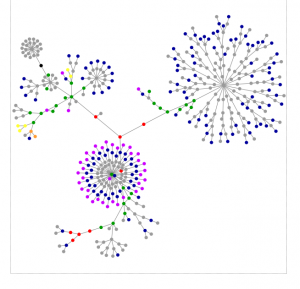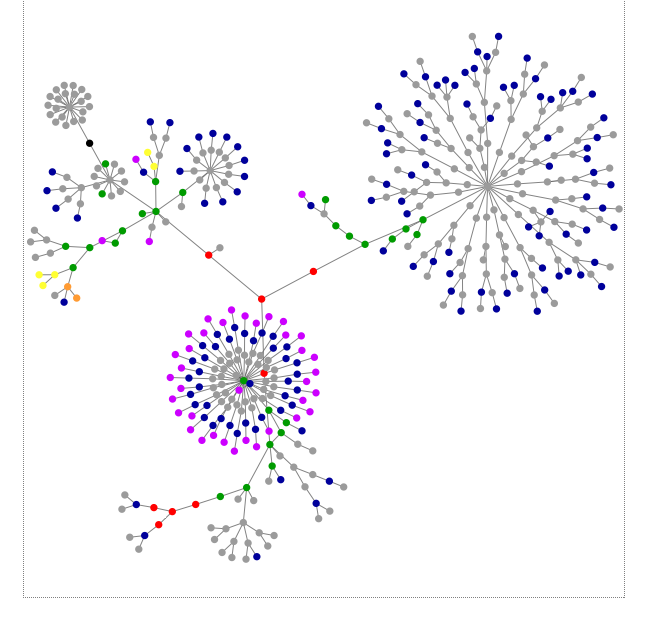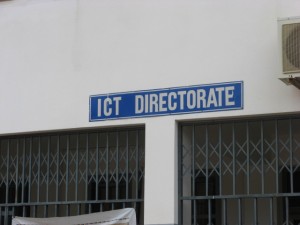
I was recently reading the blog of Mark Elliott and for the life of me I cannot remember how I was referred there or stumbled across it, but I am glad I did. Mark Elliott writes about stigmergic collaboration and the evolution of group work. After reading a few of his articles and with the headstrong bullish confidence that my ego will allow me to bring to a topic on which I am so assuredly an amateur, I immediately tried to attach this notion of stigmergic collaboration to my research area of focus, mobile academic communities of practice. The article I am so blatantly drawing from is
- Elliott, M. (2006). Stigmergic Collaboration: The Evolution of Group Work. M/C Journal, 9(2).
What is Stigmergic Collaboration?
Most of this I am copying directly from the article, so please do refer there for more information.
Pierre-Paul Grasse first coined the term stigmergy in the 1950s in conjunction with his research on termites. Grasse showed that a particular configuration of a termite’s environment (as in the case of building and maintaining a nest) triggered a response in a termite to modify its environment, with the resulting modification in turn stimulating the response of the original or a second worker to further transform its environment. Thus the regulation and coordination of the building and maintaining of a nest was dependent upon stimulation provided by the nest, as opposed to an inherent knowledge of nest building on the individual termite’s part. A highly complex nest simply self-organises due to the collective input of large numbers of individual termites performing extraordinarily simple actions in response to their local environment.
So, we are talking about actors in a social environment (termites, in this case) configuring their environment in response to their environment, collectively building a nest not due to any inherent knowledge of how to build the thing, but rather from a modification to their environment at a granular, personalized level. So, the swarm provides the energy, one unit at a time, to configure the nest. Now, there are some blatant parallels here to online networks and Elliott refers to the application of stigmergic collaboration to the internet. Elliott continues further:
The following represents some of the current findings of the author’s PhD research on and around collaboration and stigmergic collaboration, and comprises the core components of the theoretical framework guiding this article:
- Collaboration is dependent upon communication, and communication is a network phenomenon.
- Collaboration is inherently composed of two primary components, without either of which collaboration cannot take place: social negotiation and creative output.
- Collaboration in small groups (roughly 2-25) relies upon social negotiation to evolve and guide its process and creative output.
- Collaboration in large groups (roughly 25-n) is enabled by stigmergy.
As stigmergy is a method of communication in which individuals communicate with one another by modifying their local environment, it is a logical extension to apply the term to many types (if not all) of Web-based communication, especially media such as the wiki. The concept of stigmergy therefore provides an intuitive and easy-to-grasp theory for helping understand how disparate, distributed, ad hoc contributions could lead to the emergence of the largest collaborative enterprises the world has seen. However, is it correct to call these enterprises “collaboration”?
Now, I don’t pretend to be smart enough to understand the full scope and nuance of this type of collaboration, but one cannot help but use the findings regarding collaboration in small and large groups and apply that to online and mobile communities both large and small.
Granted, the implied point (at least I think it is the point) of all of this is that these types of group cannot, especially at the larger level, be engineered dispassionately. They are the direct results of social negotiation leading to creative output where members negotiate shared visions of community shape and scope. That is at the smaller level. The larger group level falls back on individual members performing tasks to modify their environment independent of the larger structure of the environment. Essentially, I am a worker ant and I will make my this my home, but I am still part of the collective.
I want to apply this analysis to the creation of mobile communities, especially ones that are not being mapped from existing physical or online communities. I am thinking say academic communities for particular disciplines that performed their work mostly in isolation in the physical world. Mobile communities of the small-ish variety (<25) would be able to socially negotiate their space (the mobile environment and the processes contained therein) and socially negotiate the creative output that would emanate from that space (whether research papers, projects, events, etc.). This seems to reinforce the importance of a participatory design model for elearning or mlearning spaces.
However, if such a model is successful, large group models are certain to appear (>25 participants), so at that stage the stigmergic elements of ‘collaboration’ kick in. Each member performing tasks and defining the space according to their needs and without an inherent knowledge of the design of the larger environment. This poses problems for scaling, unless the existing design of the smaller group model (the one that was jointly designed) can be used de facto as the larger group model.
I suppose the overriding question here is how does and should we attempt to build/actively design mobile communities to scale (>25 participants)?


[…] ‘emerges’ from need, necessity, and desire. There is network theory at work here, some stigmergic collaboration facets, and a general repudiation of zero-sumness in dealing with social networks of any sort. […]